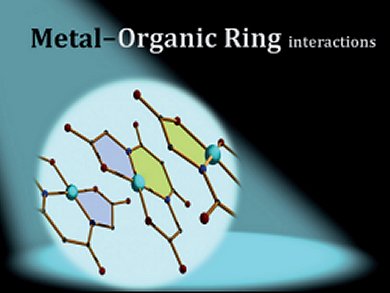Metal–organic ring interactions (MORi) are a kind of supramolecular interaction that has stacking character. Collaborators from Greece and Germany have investigated the influence of stacking effects of chelate complex units in the solid state for CuII coordination compounds. The study is based on experimental results and uses computational chemistry to understand the findings.

George Kostakias, Karlsruhe Institute of Technology, Germany, and co-workers examined the coordination abilities of the pseudopeptidic ligand, malonamide-N,N’-diacetic acid, which has three coordination modes for CuL2– (pictured). They show that the solid state interaction of the complexes form almost planar five- and six-membered chelated rings which are stacked in a similar manner to π–π aromatic systems, but in the absence of aromatic rings. Energy decomposition analysis of the Cu complexes shows that the main contributions to the intermolecular MORi arrangement arise from dispersion, electrostatic interactions, and hydrogen bonding.
Image: © Wiley-VCH
- Shedding Light on Intermolecular Metal-Organic Ring Interactions by Theoretical Studies,
K. F. Konidaris, A. C. Tsipis, G. E. Kostakis,
ChemPlusChem 2012.
DOI: 10.1002/cplu.201200018



